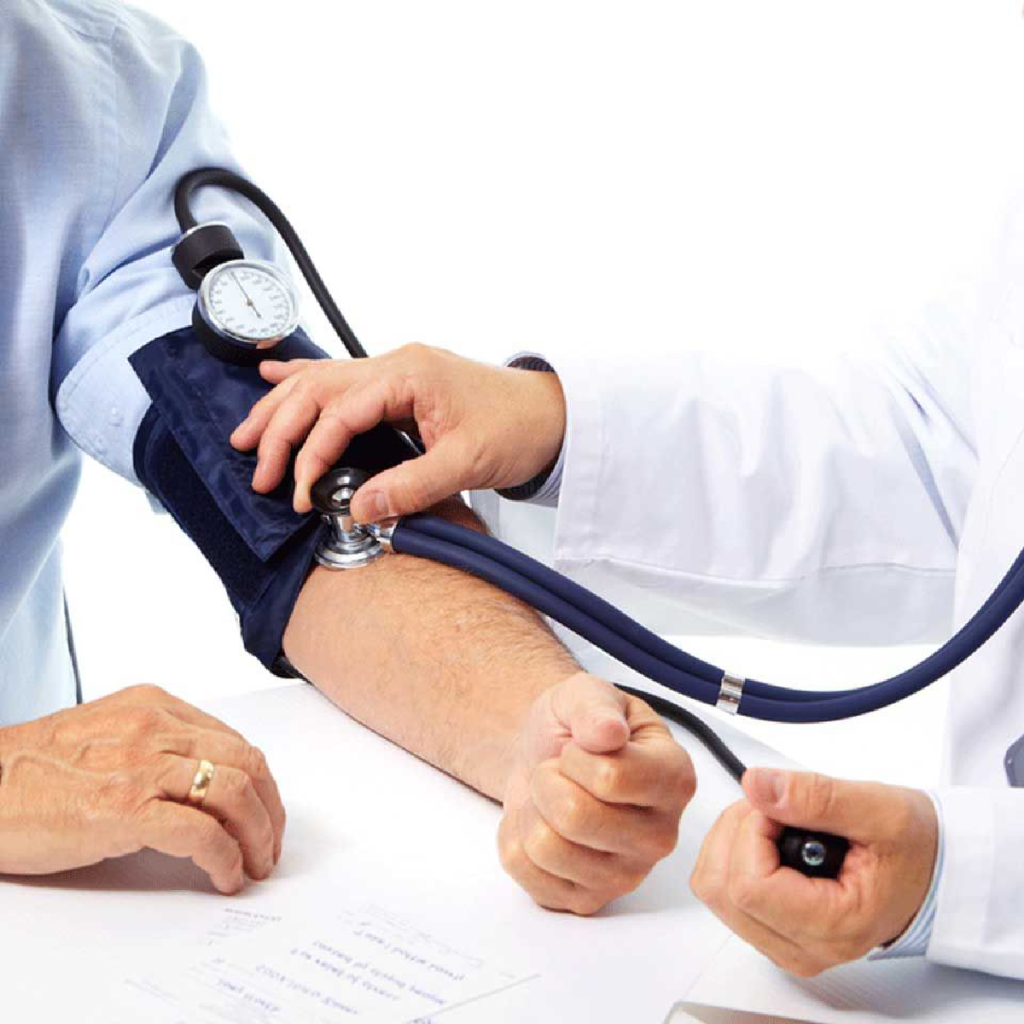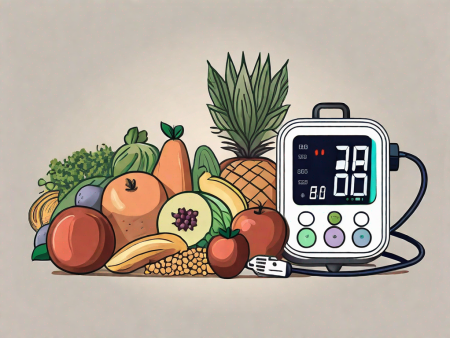Discover the importance of monitoring your cholesterol and blood pressure levels regularly.
How Often Should You Check Your Cholesterol and Blood Pressure?
It’s important to keep an eye on your cholesterol and blood pressure levels to maintain good cardiovascular health. But how often should you check them? Let’s dive deeper into understanding cholesterol and blood pressure to find the answer.

Understanding Cholesterol and Blood Pressure
Cholesterol plays a crucial role in our body. It helps in the production of hormones, vitamin D, and substances that aid in digestion. However, too much cholesterol can lead to health issues, especially when it comes to your heart.
Blood pressure, on the other hand, refers to the force that blood exerts on the walls of your arteries as your heart pumps it around your body. High blood pressure can strain your arteries and organs, potentially leading to heart disease or stroke.
The Role of Cholesterol in Your Body
Cholesterol is like a superstar that needs to be balanced. While it’s essential for healthy bodily functions, high cholesterol levels can increase the risk of heart disease. It’s important to keep a check on your cholesterol levels to make sure you’re in the safe zone.
When it comes to cholesterol, there are two main types: LDL (low-density lipoprotein) and HDL (high-density lipoprotein). LDL cholesterol is often referred to as “bad” cholesterol because it can build up in the arteries, leading to blockages. On the other hand, HDL cholesterol is known as “good” cholesterol because it helps remove LDL cholesterol from the arteries, reducing the risk of heart disease.
According to experts, adults should aim to keep their total cholesterol levels below 200 milligrams per deciliter (mg/dL) for optimal heart health. It’s also important to keep an eye on your LDL and HDL cholesterol levels. Ideally, LDL cholesterol should be below 100 mg/dL, while HDL cholesterol should be above 40 mg/dL for men and above 50 mg/dL for women.
The Importance of Monitoring Blood Pressure
Blood pressure is like a ninja that silently creeps up on you. Regular monitoring of your blood pressure is crucial because it can fluctuate throughout the day and vary from person to person. It’s essential to keep those numbers in check to avoid any surprises.
When measuring blood pressure, two numbers are recorded: systolic pressure and diastolic pressure. Systolic pressure represents the force exerted on the artery walls when the heart contracts, while diastolic pressure represents the force when the heart is at rest between beats.
Aim to maintain a blood pressure reading of around 120/80 mm Hg for a healthy cardiovascular system. However, it’s important to note that blood pressure goals may vary depending on individual factors such as age, overall health, and presence of other medical conditions. It’s always best to consult with a healthcare professional to determine your target blood pressure range.
In addition to monitoring your blood pressure, lifestyle modifications can also play a significant role in maintaining healthy blood pressure levels. Regular exercise, a balanced diet low in sodium and high in fruits and vegetables, maintaining a healthy weight, and managing stress are all important factors in promoting optimal blood pressure.
Frequency of Health Checks
Now that you understand the basics, let’s talk about how often you should check your cholesterol and blood pressure levels.
Regular health checks are essential for maintaining optimal well-being. By monitoring your cholesterol and blood pressure levels, you can take proactive steps to prevent serious health conditions and ensure that your body is functioning at its best.
Recommended Frequency for Cholesterol Checks
It’s generally recommended to have your cholesterol checked every 4 to 6 years if you’re a healthy adult. However, it’s important to note that this frequency may vary depending on individual factors.
If you have a family history of heart disease or other risk factors, it’s best to get checked more frequently. By doing so, you can catch any potential issues early on and take appropriate measures to manage your cholesterol levels effectively.
Furthermore, certain health conditions such as diabetes, high blood pressure, and unhealthy habits like smoking or having a poor diet can significantly impact your cholesterol levels. If you fall into any of these categories, it becomes even more crucial to monitor your cholesterol more frequently.
How Often Should You Monitor Your Blood Pressure?
Checking your blood pressure regularly is a breeze. You can easily do it at home with a blood pressure monitor or use the one available at your local pharmacy. By monitoring your blood pressure, you gain valuable insights into your cardiovascular health.
For adults with normal readings, it is generally recommended to monitor your blood pressure at least once a year. This annual check-up allows you to stay informed about your blood pressure levels and detect any potential changes or abnormalities.
However, if you have high blood pressure, your healthcare provider may recommend more frequent checks to ensure it’s under control. By monitoring your blood pressure more regularly, you can work closely with your healthcare team to manage and regulate your blood pressure effectively.
Remember, prevention is key when it comes to maintaining good health. By staying proactive and monitoring your cholesterol and blood pressure levels, you are taking important steps towards a healthier future.
Factors Influencing Cholesterol and Blood Pressure Levels
Although age is just a number, it can have an impact on your health checks.
As you grow older, the risk of developing high cholesterol and blood pressure increases. It’s important to keep an eye on these levels, especially after the age of 40.
Your healthcare provider may adjust the frequency of your health checks based on your age and overall health status.
But age is not the only factor to consider when it comes to cholesterol and blood pressure levels. Lifestyle choices also play a significant role in determining these levels.
Lifestyle Factors and Their Impact
Your lifestyle choices can greatly influence your cholesterol and blood pressure levels.
Unhealthy eating habits can contribute to the buildup of LDL cholesterol, also known as “bad” cholesterol, in your arteries. This can lead to atherosclerosis, a condition where plaque builds up in the arteries and restricts blood flow, increasing the risk of high blood pressure and heart disease.
Excessive alcohol consumption can also have a negative impact on your cholesterol and blood pressure levels. Alcohol can raise your triglyceride levels, a type of fat found in the blood, which can contribute to high cholesterol and increase the risk of hypertension.
Smoking is another lifestyle factor that can have detrimental effects on your cardiovascular health. Smoking damages the lining of your arteries, making them more susceptible to plaque buildup. This can lead to high cholesterol and blood pressure, as well as an increased risk of heart attack and stroke.
A sedentary lifestyle, characterized by a lack of physical activity, can also contribute to high cholesterol and blood pressure. Regular exercise helps to lower LDL cholesterol levels and improve blood circulation, reducing the risk of cardiovascular diseases.
On the other hand, maintaining a healthy diet and active lifestyle can help keep these levels in check. Consuming a diet rich in fruits, vegetables, whole grains, and lean proteins can help lower cholesterol levels and maintain a healthy blood pressure. Regular exercise, such as brisk walking, jogging, or swimming, can also help improve cardiovascular health and reduce the risk of high cholesterol and blood pressure.
It’s important to note that while lifestyle choices can have a significant impact on cholesterol and blood pressure levels, they are not the sole determinants. Genetic factors, family history, and certain medical conditions can also influence these levels. Therefore, it is crucial to work closely with your healthcare provider to develop a personalized plan to manage and monitor your cholesterol and blood pressure levels.
Risks of High Cholesterol and Blood Pressure
High cholesterol and blood pressure can be like unwanted guests crashing your body’s party. Let’s take a look at the potential risks they impose.
When it comes to high cholesterol, the potential health risks are significant. When cholesterol levels get too high, it can lead to the formation of plaques in your arteries. These plaques can restrict blood flow, increasing the risk of heart disease, heart attacks, and strokes. Imagine your arteries as highways, and the plaques as roadblocks that slow down or even stop the flow of traffic. This can have serious consequences for your overall health and well-being.
However, the good news is that adopting a heart-healthy lifestyle and taking necessary medications, if prescribed, can effectively manage high cholesterol levels. By making small changes to your diet, such as reducing your intake of saturated and trans fats, and increasing your consumption of fruits, vegetables, and whole grains, you can help lower your cholesterol levels and reduce the risk of these potentially life-threatening conditions.
Now, let’s shift our focus to the dangers of high blood pressure. Often referred to as the silent killer, high blood pressure usually doesn’t have many noticeable symptoms. It silently lurks within your body, wreaking havoc on your arteries, heart, and other organs. Just like a stealthy intruder, it can cause damage without you even realizing it.
Over time, high blood pressure can lead to a variety of health problems. It can damage your arteries, making them less flexible and more prone to clogging. This can increase the risk of heart attacks, strokes, and other cardiovascular diseases. Additionally, high blood pressure can also affect your kidneys, leading to kidney problems and even kidney failure. Furthermore, it can impact your vision, potentially causing vision loss or other eye-related complications.
Given the potential dangers associated with high blood pressure, it’s crucial to keep your blood pressure in check. Regular monitoring, adopting a healthy lifestyle, and following your healthcare provider’s recommendations can help you maintain a healthy blood pressure level and reduce the risk of these serious complications.
Ways to Maintain Healthy Cholesterol and Blood Pressure Levels
Now that you know the risks, let’s explore the ways to maintain healthy cholesterol and blood pressure levels.

Diet and Its Role in Cholesterol and Blood Pressure
Healthy eating can be a game-changer. Incorporating a diet rich in fruits, vegetables, whole grains, lean proteins, and low-fat dairy products can help keep your cholesterol and blood pressure in check.
Avoiding trans fats, saturated fats, and excessive sodium intake is also vital for maintaining optimal heart health.
Exercise and Its Impact on Your Health
Get moving and shake off those high levels! Regular physical activity not only helps control your weight but can also lower your cholesterol and blood pressure levels.
Engage in activities you enjoy, whether it’s brisk walking, jogging, dancing, or playing sports. The key is to stay active and make exercise a part of your daily routine.
So, how often should you check your cholesterol and blood pressure? It’s wise to consult with your healthcare provider for personalized recommendations based on your age, health history, and risk factors. By monitoring these levels and making healthy lifestyle choices, you’ll take proactive steps towards keeping your cardiovascular health in tip-top shape. Stay healthy, stay happy!






